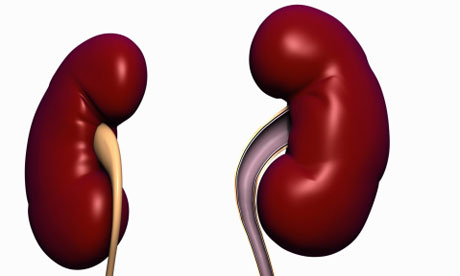
The noisiest patient I ever had was a young man suffering from a disorder affecting one of his ureters. As he lay on a trolley, waiting to be seen in a heaving emergency room, his cries of pain escalated. To begin with, he simply groaned. By the time I got to him, he was declaring: "This is worse than childbirth!"
Not to be confused with the urethra, a single structure that takes urine from the bladder to the outside world, the ureter is a paired tube that delivers urine from each kidney to the bladder.
It arises on both sides from the concave surface of the kidney known as the hilum. It is between 20 and 30cm long and can be affected by a number of disorders. These range from something present from birth called bifid ureter, in which the structure is doubled, to inflammation and cancer. But kidney stones are by far the most common problem, and were the source of my patient's agony.
Kidney stones form when tiny crystals present in the urine (often made from calcium) clump together to form a mass. Young men are the usual victims, and dehydration the main cause. When the stones get above a certain size, they can no longer pass along the ureters and get stuck.
This tends to occur in the three places where the ureter is at its narrowest: where the ureter leaves the kidney, where it crosses the iliac artery and where it enters the bladder. Impaction of a stone at any of these sites causes severe pain, known as renal colic, usually felt in the abdomen or side, and often tracking down to the groin.
After giving my patient painkillers, I took him to the x-ray room for a test called an intravenous urogram. This involves squirting iodine dye into an arm vein and waiting for it to light up the kidneys, ureter and bladder on x-rays, which are then checked for blockages. To make sure a patient is not allergic to iodine, we ask whether they can eat shellfish. It is also polite to warn them they may feel warm as the dye goes in.
Other treatments include surgery or lithotripsy – in which stones are smashed by applying ultrasonic waves to the outside of the abdomen. My patient was lucky. His stone passed all by itself and he left the hospital that day with little more than a determination to drink more water in future.
• Gabriel Weston is a surgeon and author of Direct Red: a surgeon's story

